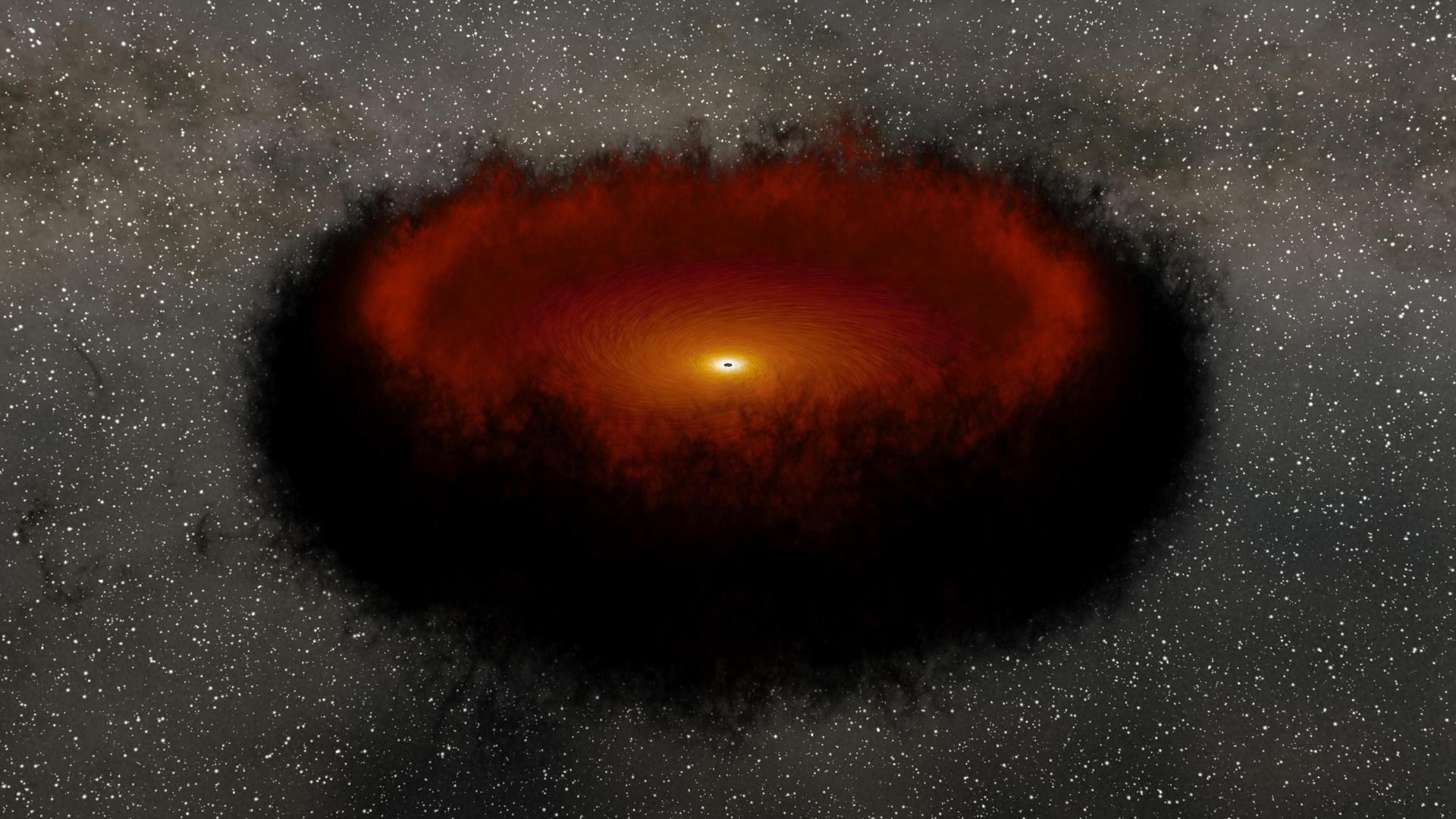Ultrahot, ultrafast explosion called 'the Camel' has astronomers puzzled
Only two other explosions like this have ever been detected: "the Cow" and "the Koala."

In October 2020, astronomers detected an enormous, ancient explosion tearing through a galaxy several billion light-years from Earth. The blast appeared out of nowhere, reached peak brightness within a few days and then rapidly vanished again within a month — indicating that an extreme cosmic event, like the formation of a black hole or neutron star, had just occurred.
Astronomers call sudden, bright blasts like these fast blue optical transients (FBOTs), named for their extreme "blue" heat and incredibly rapid evolution.
But, if you prefer, you can call this one "the Camel."
That nickname (a play on the object's technical name, ZTF20acigmel) may seem unbefitting a blast so fast and powerful, but such is the way of FBOTs. A similar explosion, detected in 2018 roughly 200 million light-years from Earth, earned the unlikely name "the Cow" (the result of a procedurally generated scientific name), while another 2020 FBOT was dubbed "the Koala" (also a play on its technical name).
These three cuddly-wuddly FBOTs are in a class of their own when it comes to stellar explosions. Unlike typical supernovas — the epic blasts that occur when stars run out of fuel and collapse in on themselves — FBOTs seem to appear and disappear in a matter of weeks, rather than years.
But even after their visible light fades, FBOTs continue to be radiation powerhouses. In a paper published Oct. 13 to the preprint database arXiv, astronomers studied the Camel in wavelengths across the electromagnetic spectrum, to get a glimpse of some of the invisible carnage playing out after the initial blast.
The team found that the initial Camel explosion also shone brightly in radio frequencies, suggesting that the blast was tearing through its cosmic neighborhood extremely quickly — probably a few tenths of the speed of light (more than 100 million mph or 160 million kmh), the researchers wrote. Such bright radio emissions usually come from synchrotron radiation, which occurs when charged particles rocket through a magnetic field at a fraction of light speed.
Get the world’s most fascinating discoveries delivered straight to your inbox.
Behind the blast, a powerful engine seethed for months. The team found that the blast glowed with X-ray emissions long after its visible light faded. As with the Cow, this stream of X-rays suggests that something powerful, like a black hole or a neutron star, was driving the Camel's intense emissions, the team suggested.
It could be that FBOTs represent a rarely seen moment of cosmic creation — blasts that occur the instant an old star implodes, collapsing into a massive black hole or fast-spinning neutron star before our very eyes.
Astronomers have never seen these processes actually take place (as far as they know), so it's hard to know for sure what the resulting flood of radiation would look like. But one thing is clear: The Cow, the Koala and the Camel are not your average mammals. There's nothing average about them.
Originally published on Live Science.

Brandon is the space / physics editor at Live Science. With more than 20 years of editorial experience, his writing has appeared in The Washington Post, Reader's Digest, CBS.com, the Richard Dawkins Foundation website and other outlets. He holds a bachelor's degree in creative writing from the University of Arizona, with minors in journalism and media arts. His interests include black holes, asteroids and comets, and the search for extraterrestrial life.
